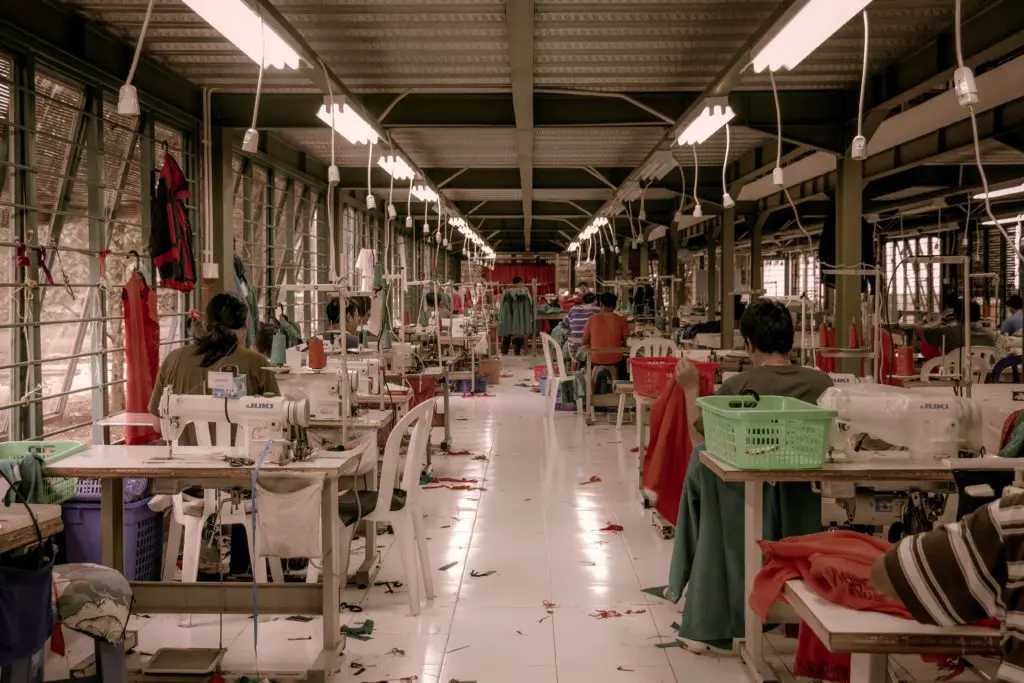
According to the BBC, an estimated 92 million tonnes of textiles end up in landfills each year.
To reverse that process, if brands design products with disassembly in mind, this could potentially change the game for recycling post-consumer garments. Though we are moving in the right direction with adequate research efforts and innovation, scaling the process will require significant infrastructure and investment.
Developing a Circular Fashion System
Before getting into what designing for disassembly is, let’s first understand why it’s essential for the development of a circular fashion system. Our current and previous business models have traditionally been linear, which usually follow the timeline of design, resource acquisition, garment production, garment use, and finally, garment disposal. This model has proven to be harmful to the environment and society, as the pollution in landfills is increasing and consumer habits have not improved.
On the other hand, a circular system brings waste back as a resource and helps to close the loop. To accomplish this, certain processes are required, such as efficient sorting and recycling facilities, and most importantly, garments that can be recycled. One of the issues here is that most garments are designed to meet the needs of the consumer rather than the post-consumer recycling process.

For example, a linen garment is not stretchable by nature, but the retailer decides to blend linen with a stretchy material so that it’s comfortable for the consumer. This may satisfy the customer, but it makes recycling very difficult as blended materials (especially those made of plastic) are difficult to separate and recycle compared to mono-material garments. This is the epitome of why the “design for circularity” movement exists in the sustainable fashion world, where one way to design for circularity is to design for disassembly.
Decoding the Disassembly Process
So, how can we design for disassembly to make recycling easier? One method is to focus on mono-materials rather than a blend. This is a decision that needs to be made early on in the design phase of a garment, where educating designers and large retailers on the subject could help make a difference in future production.

The next key element of designing for disassembly is to design a product that can be physically broken apart. This calls for attention to the stitching and threads used in garment production, where if we make it easier to disassemble a garment into pieces, it will be recycled more easily. A successful start-up Resortecs has revolutionized this approach by developing threads that dissolve at high temperatures. Their innovative design for disassembly technology has gained considerable attention since its launch in 2017. Resortecs has officially joined forces with the world’s largest luxury group, LVMH, through their start-up acceleration program, “Maison des Startups LVMH”.
What Happens After Disassembly?
Once a garment has been physically disassembled, the textiles can then go to sorting and recycling centers, or be sold to manufacturers to produce new textile products. This is where Reverse Resources, a tracking and trading platform for textile waste, can help map out textile leftovers from fabric and garment production.
Designing for disassembly can only be effective if stakeholders throughout the fashion supply chain are involved, including designers, suppliers, manufacturers, sustainable innovators, sortation, and recycling facilities, etc. We hope that the necessary infrastructure and processes will be implemented and scaled sooner than later.
Join Our Movement
Fashion Takes Action is doing great work in this area by running a mechanical textile recycling pilot project that aims to connect necessary stakeholders to facilitate and accelerate this process. Learn more here.
Written by: Alexandra Petros
